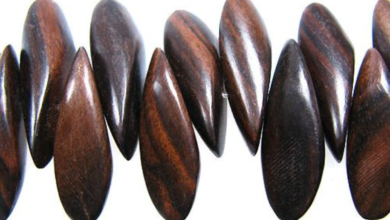Mature Tubes: A Comprehensive Guide to Understanding and Utilizing Them

Introduction to Mature Tubes
Mature tubes have become an integral part of various industries, from engineering to healthcare. These specialized tubes are designed for durability, efficiency, and long-term performance, making them a preferred choice in applications where reliability is crucial.
The term “mature tubes” refers to tubing solutions that have been refined over time, incorporating advanced materials and manufacturing techniques to meet modern demands. Unlike standard tubes, mature tubes undergo rigorous testing and optimization to ensure they perform under extreme conditions.
In this article, we will explore the different aspects of mature , including their types, applications, benefits, and future trends. Whether you’re an engineer, a medical professional, or simply curious about this technology, this guide will provide valuable insights.
Types of Mature Tubes
Mature tubes come in various forms, each tailored for specific applications. Understanding these types helps in selecting the right tube for a particular use case.
1. Industrial Mature Tubes
Industrial mature are commonly used in manufacturing, construction, and heavy machinery. These tubes are built to withstand high pressure, corrosive environments, and mechanical stress. Materials like stainless steel, carbon steel, and reinforced polymers are often used to enhance durability.
One key advantage of industrial mature tubes is their resistance to wear and tear. Industries such as oil and gas, chemical processing, and automotive rely on these tubes for transporting fluids, gases, and other materials safely.
Additionally, industrial tubes often feature specialized coatings to prevent rust and degradation. This ensures longevity even in harsh operating conditions.
2. Medical Mature Tubes
In the medical field, tubes play a critical role in diagnostics, treatment, and patient care. Examples include catheters, IV tubes, and endoscopes. These tubes must meet strict hygiene and biocompatibility standards to ensure patient safety.
Medical mature tubes are typically made from silicone, polyurethane, or other medical-grade plastics. They are designed to be flexible yet sturdy, allowing for precise delivery of medications or extraction of bodily fluids without causing discomfort.
Furthermore, advancements in medical tubing have led to antimicrobial coatings, reducing infection risks. This makes mature indispensable in hospitals and clinics worldwide.
3. HVAC and Plumbing Mature
Heating, ventilation, air conditioning (HVAC), and plumbing systems rely heavily on mature tubes for efficient fluid transport. These tubes are designed to handle water, refrigerants, and other liquids without leaks or pressure drops.
Copper and PEX (cross-linked polyethylene) are popular materials in this category due to their thermal conductivity and flexibility. Mature tubes in HVAC systems ensure optimal energy efficiency by maintaining consistent temperature control.
Plumbing applications benefit from corrosion-resistant tubes, which extend the lifespan of pipelines and reduce maintenance costs. Innovations like self-healing tubes are also emerging, further enhancing reliability.
Key Benefits of Mature Tubes
Mature offer numerous advantages over conventional tubing solutions. Their advanced design and material composition make them a superior choice in many scenarios.
1. Enhanced Durability
One of the most significant benefits of mature tubes is their extended lifespan. Thanks to high-quality materials and protective coatings, these tubes resist corrosion, abrasion, and chemical damage far better than standard tubes.
Industries that operate in extreme environments—such as offshore drilling or chemical plants—benefit greatly from tubes. Their ability to maintain structural integrity under stress reduces downtime and replacement costs.
2. Improved Safety
Safety is a top priority in industries like healthcare and oil refining. Mature are rigorously tested to ensure they do not fail under pressure, preventing hazardous leaks or ruptures.
In medical applications, biocompatibility ensures that tubes do not trigger adverse reactions in patients. Similarly, industrial mature are often flame-retardant, adding an extra layer of protection in high-risk settings.
3. Cost-Effectiveness
While mature tubes may have a higher upfront cost, their long-term savings are substantial. Reduced maintenance, fewer replacements, and increased efficiency contribute to a lower total cost of ownership.
Businesses that invest in tubes often see a quick return on investment due to minimized operational disruptions and enhanced productivity.
Applications of Mature Tubes Across Industries
Mature are versatile and find use in multiple sectors. Below are some of the most prominent applications.
1. Oil and Gas Industry
The oil and gas sector relies on mature tubes for drilling, transportation, and refining processes. These tubes must endure high pressures, extreme temperatures, and corrosive substances.
Offshore platforms, in particular, use tubes with anti-corrosive coatings to prevent seawater damage. Their reliability ensures uninterrupted operations in challenging environments.
2. Automotive and Aerospace
In vehicles and aircraft, mature tubes are used in fuel systems, hydraulic mechanisms, and cooling systems. Lightweight yet strong materials like titanium alloys are often employed to enhance performance.
Aerospace applications demand tubes that can withstand rapid pressure changes and temperature fluctuations. Mature tubes meet these requirements, ensuring safety and efficiency in flight.
3. Renewable Energy Systems
Solar panels, wind turbines, and geothermal plants utilize mature for fluid transfer and heat exchange. Their durability ensures consistent energy production with minimal maintenance.
As renewable energy adoption grows, the demand for high-performance tubes will continue to rise.
Future Trends in Mature Tube Technology
The evolution of mature tubes is ongoing, with several exciting advancements on the horizon.
1. Smart Tubes with IoT Integration
Future mature tubes may incorporate sensors to monitor pressure, temperature, and wear in real time. This IoT-enabled approach will allow predictive maintenance, reducing unexpected failures.
2. Eco-Friendly Materials
Sustainability is a growing concern, leading to the development of biodegradable and recyclable mature tubes. These innovations will minimize environmental impact without compromising performance.
3. 3D-Printed Custom Tubes
Additive manufacturing is revolutionizing tube production by enabling custom designs with complex geometries. This will allow for highly specialized applications in medicine and engineering.





